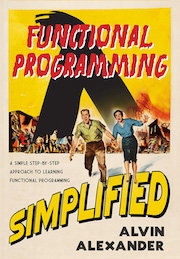Java example source code file (XRTextRenderer.java)
The XRTextRenderer.java Java example source code
/*
* Copyright (c) 2010, 2013, Oracle and/or its affiliates. All rights reserved.
* DO NOT ALTER OR REMOVE COPYRIGHT NOTICES OR THIS FILE HEADER.
*
* This code is free software; you can redistribute it and/or modify it
* under the terms of the GNU General Public License version 2 only, as
* published by the Free Software Foundation. Oracle designates this
* particular file as subject to the "Classpath" exception as provided
* by Oracle in the LICENSE file that accompanied this code.
*
* This code is distributed in the hope that it will be useful, but WITHOUT
* ANY WARRANTY; without even the implied warranty of MERCHANTABILITY or
* FITNESS FOR A PARTICULAR PURPOSE. See the GNU General Public License
* version 2 for more details (a copy is included in the LICENSE file that
* accompanied this code).
*
* You should have received a copy of the GNU General Public License version
* 2 along with this work; if not, write to the Free Software Foundation,
* Inc., 51 Franklin St, Fifth Floor, Boston, MA 02110-1301 USA.
*
* Please contact Oracle, 500 Oracle Parkway, Redwood Shores, CA 94065 USA
* or visit www.oracle.com if you need additional information or have any
* questions.
*/
package sun.font;
import sun.awt.*;
import sun.java2d.SunGraphics2D;
import sun.java2d.pipe.GlyphListPipe;
import sun.java2d.xr.*;
/**
* A delegate pipe of SG2D for drawing any text to a XRender surface
*
* @author Clemens Eisserer
*/
public class XRTextRenderer extends GlyphListPipe {
// Workarround for a bug in libXrender.
// In case the number of glyphs of an ELT is a multiple of 254,
// a few garbage bytes are sent to the XServer causing hangs.
static final int MAX_ELT_GLYPH_COUNT = 253;
XRGlyphCache glyphCache;
XRCompositeManager maskBuffer;
XRBackend backend;
GrowableEltArray eltList;
public XRTextRenderer(XRCompositeManager buffer) {
glyphCache = new XRGlyphCache(buffer);
maskBuffer = buffer;
backend = buffer.getBackend();
eltList = new GrowableEltArray(64);
}
protected void drawGlyphList(SunGraphics2D sg2d, GlyphList gl) {
if (gl.getNumGlyphs() == 0) {
return;
}
try {
SunToolkit.awtLock();
XRSurfaceData x11sd = (XRSurfaceData) sg2d.surfaceData;
x11sd.validateAsDestination(null, sg2d.getCompClip());
x11sd.maskBuffer.validateCompositeState(sg2d.composite, sg2d.transform, sg2d.paint, sg2d);
float advX = gl.getX();
float advY = gl.getY();
int oldPosX = 0, oldPosY = 0;
if (gl.isSubPixPos()) {
advX += 0.1666667f;
advY += 0.1666667f;
} else {
advX += 0.5f;
advY += 0.5f;
}
XRGlyphCacheEntry[] cachedGlyphs = glyphCache.cacheGlyphs(gl);
boolean containsLCDGlyphs = false;
int activeGlyphSet = cachedGlyphs[0].getGlyphSet();
int eltIndex = -1;
gl.getBounds();
float[] positions = gl.getPositions();
for (int i = 0; i < gl.getNumGlyphs(); i++) {
gl.setGlyphIndex(i);
XRGlyphCacheEntry cacheEntry = cachedGlyphs[i];
eltList.getGlyphs().addInt(cacheEntry.getGlyphID());
int glyphSet = cacheEntry.getGlyphSet();
containsLCDGlyphs |= (glyphSet == glyphCache.lcdGlyphSet);
int posX = 0, posY = 0;
if (gl.usePositions()
|| cacheEntry.getXAdvance() != ((float) cacheEntry.getXOff())
|| cacheEntry.getYAdvance() != ((float) cacheEntry.getYOff())
|| glyphSet != activeGlyphSet
|| eltIndex < 0
|| eltList.getCharCnt(eltIndex) == MAX_ELT_GLYPH_COUNT) {
eltIndex = eltList.getNextIndex();
eltList.setCharCnt(eltIndex, 1);
activeGlyphSet = glyphSet;
eltList.setGlyphSet(eltIndex, glyphSet);
if (gl.usePositions()) {
// In this case advX only stores rounding errors
float x = positions[i * 2] + advX;
float y = positions[i * 2 + 1] + advY;
posX = (int) Math.floor(x);
posY = (int) Math.floor(y);
advX -= cacheEntry.getXOff();
advY -= cacheEntry.getYOff();
} else {
/*
* Calculate next glyph's position in the case of
* relative positioning. In XRender we can only position
* glyphs using integer coordinates, therefor we sum all
* the advances up as float, and convert them to integer
* later. This way rounding-error can be corrected, and
* is required to be consistent with the software loops.
*/
posX = (int) Math.floor(advX);
posY = (int) Math.floor(advY);
// Advance of ELT = difference between stored relative
// positioning information and required float.
advX += (cacheEntry.getXAdvance() - cacheEntry.getXOff());
advY += (cacheEntry.getYAdvance() - cacheEntry.getYOff());
}
// Offset of the current glyph is the difference
// to the last glyph and this one
eltList.setXOff(eltIndex, (posX - oldPosX));
eltList.setYOff(eltIndex, (posY - oldPosY));
oldPosX = posX;
oldPosY = posY;
} else {
eltList.setCharCnt(eltIndex, eltList.getCharCnt(eltIndex) + 1);
}
}
int maskFormat = containsLCDGlyphs ? XRUtils.PictStandardARGB32 : XRUtils.PictStandardA8;
maskBuffer.compositeText(x11sd, (int) gl.getX(), (int) gl.getY(), 0, maskFormat, eltList);
eltList.clear();
} finally {
SunToolkit.awtUnlock();
}
}
}
Other Java examples (source code examples)Here is a short list of links related to this Java XRTextRenderer.java source code file: |
 The search page
The search page Other Java source code examples at this package level
Other Java source code examples at this package level Click here to learn more about this project
Click here to learn more about this project
